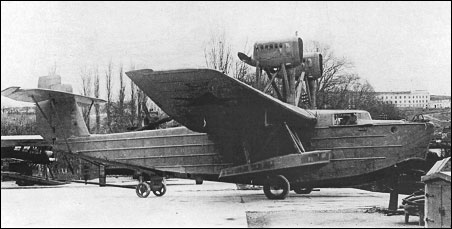 |
Tupolev ANT-8 / MDR-21931 |  |
| FLYING BOAT | Virtual Aircraft Museum / USSR / Russia / Tupolev |
 |
Although Tupolev and the TsAGI had been requested to construct a flying boat in 1925, higher priority had been given to his long-range bomber projects and little work was done. But in 1930, with Ivan Pogosski as head, work began in earnest on the ANT-8, which was given the military designation of MDR-2 (MDR = Morskoi Dalnii Razvedchik = Naval Long-Range Reconnaissance). The designation ANT-8 indicated how long the TsAGI had held back this project, for shortly after its first flight, the ANT-14 flew. The flying boat's wings and tailplane were derived from the ANT-9, and again an all-metal construction was chosen. The fuselage was given a lot of attention by the design team, and the opportunity was taken to make the floats part of the load bearing structure as well as surface balancing devices. Power was provided by two BMW-VI pusher engines mounted on struts over the wings. It was piloted by S. Riballschuk on its first flight which took place on 30 January 1931. Armament was two DA-2 machine-guns, and it could carry an underwing bomb load of 900kg. Tupolev regarded the ANT-8 as a proof of concept machine for further development, particularly of hulls. In fact, it turned out to be a worthwhile design in its own right, although the Soviet Navy decided not to proceed with it as it considered the design already dated and unlikely to meet its developing needs. It would have to wait another five years for Beriev's MBR-2. Only the prototype ANT-8 was built; although several modifications were made to its hull, it remained essentially a one-off experimental aircraft.
|  COMPANY PROFILE | |||||||||||||||||||||||||||||||||||||||||||||||||||
 |

|

